Master Printmakers: Picasso Working With the Crommelyncks
The following collection of scarce, early proofs by Pablo Picasso, as well as a maquette for an original ceramic, was painstakingly built by a California connoisseur and is now appearing at auction for the first time. Swann Auction Galleries is pleased to offer this significant collection in our Old Master Thorugh Modern Prints sale on May 6, 2021. While there are proofs from the 1940 and 1950s, the core of the collection consists of prints that Picasso created for his two major career-end series, 347 Gravures and 156 Gravures, working with the Crommelynck master printers.
The Crommelnyck Family
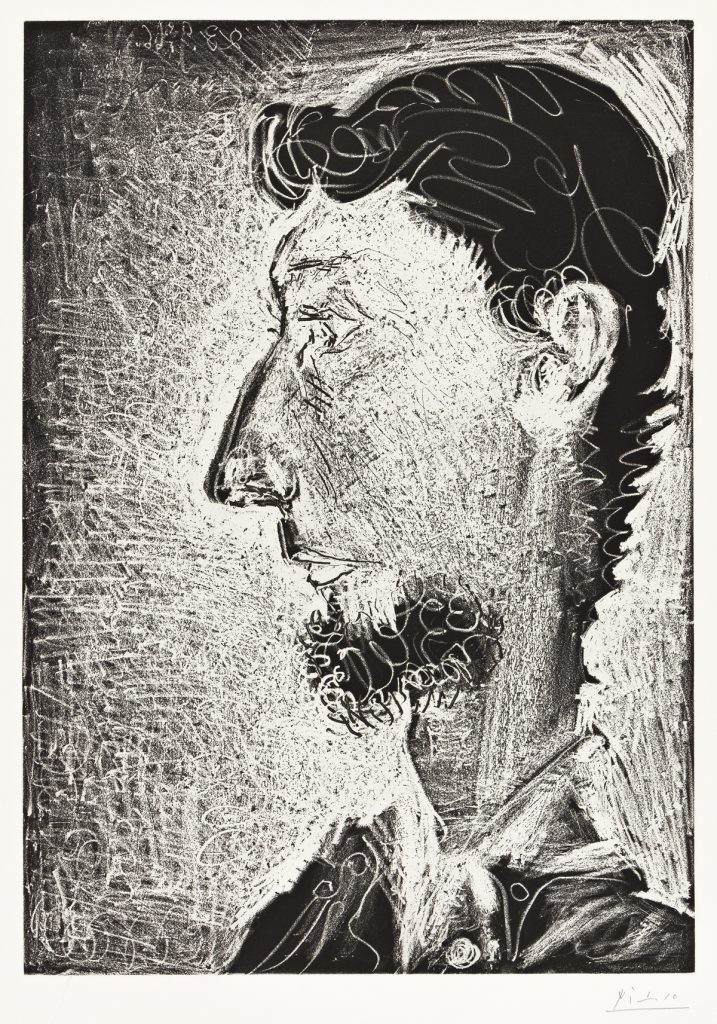
Brothers Aldo, Piero, and Milan Crommelynck were responsible for printing an astonishing 45 percent of Pablo Picasso’s intaglio prints. Piero, the youngest brother, who bore a resemblance to Don Quixote (see image above), has appeared in numerous Picasso portraits and his likeness was used for Picasso’s bearded musketeer who appears frequently in the Celestine images of the 347 Gravures. The Crommelynck family were instrumental in Picasso’s late-career productivity and kept up with the aging artist’s relentless pace.
The Commelyncks, Picasso & Modern Masters
Picasso had met the Crommelyncks while the printers were working as apprentices at Roger Lacourière’s workshop in Paris. Lacourière collaborated closely with Picasso on his Vollard Suite during the 1930s and frequent projects thereafter. In 1956, the brothers set up their own workshop in Paris. Their father, Fernand Crommelynck, was a well-known playwright and his artist friends Georges Braque (see lots 341-348) and Joan Miro (see lots 387-398) were among their first clients.
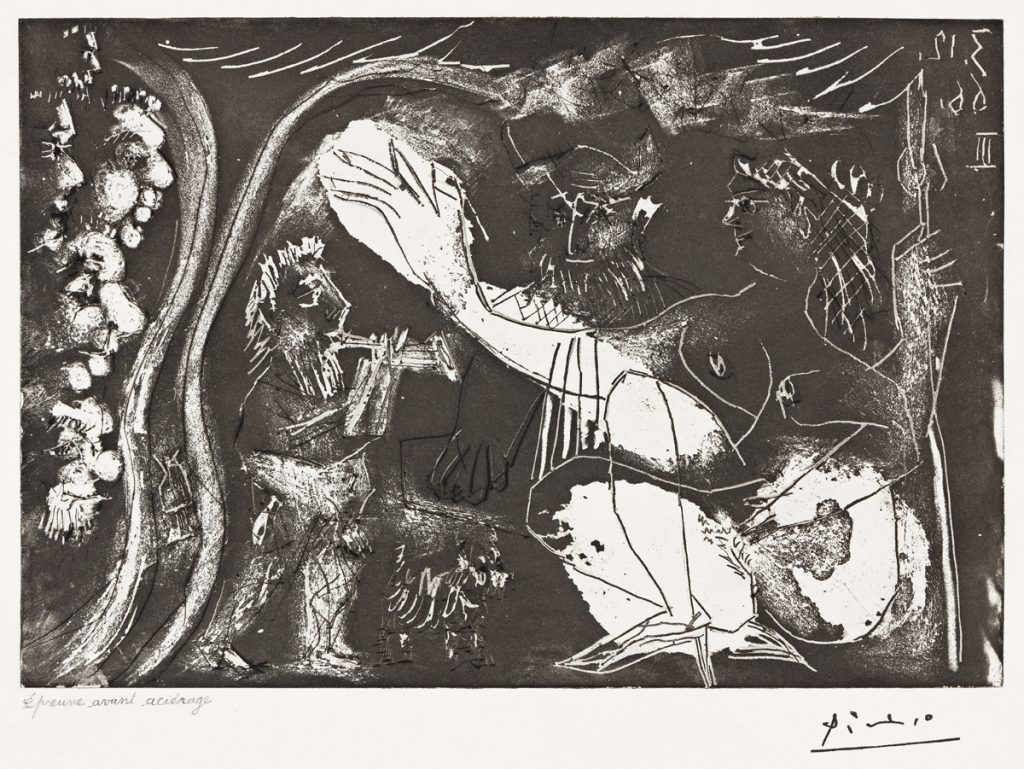
Picasso began his close collaboration with the Crommelynck atelier in the 1960s, after settling in the south of France. He’d grown weary of lithography and found long-distance printmaking partnerships difficult when approving proofs. In 1963, Picasso was able to return to intaglio in earnest when Aldo Crommelynck installed a workshop in an old bakery in Mougins, close to Picasso’s villa. Since they were unaware of how long their project with Picasso would last, the brothers overlooked heating in the workshop and used secondhand equipment. However improvised, proximity to the retro-fitted bakery atelier and expert printers allowed Picasso to work unfettered; his final decade was his most active period of printmaking. Piero Crommelynck and his family would spend half of their year in Mougins assisting Picasso in the makeshift workshop. The worn path between Picasso’s residence and the Crommelynck’s workshop was called “The Copper Trail” by the brothers who frequented the path carrying proofs and plates. The Crommelynck families were among the few who had a deeply personal and lasting relationship with Picasso late into his career.
Related Reading: On Picasso: Printmaker
Pablo Picasso’s Linoleum Cuts
347 Gravures
The Mougins output began in October 1963 with a small series of etchings of rape scenes (Étreinte). After a brief recovery period from surgery in 1965, Picasso returned to intaglio with as much vigor as before. Picasso’s 347 Gravures (see lots 298-302 and 313-331), among his most iconic graphic work, was created between March and October 1968, producing 347 prints in a mere 204 days. During his creative flashes, Picasso would produce as many as three plates a day. Piero and Aldo Crommelynck’s efficiency and technical expertise kept pace with Picasso’s fervor and imagination as he experimented with crayon over aquatint, various size of grounds, and the use of different varnish, greases and intaglio tools.
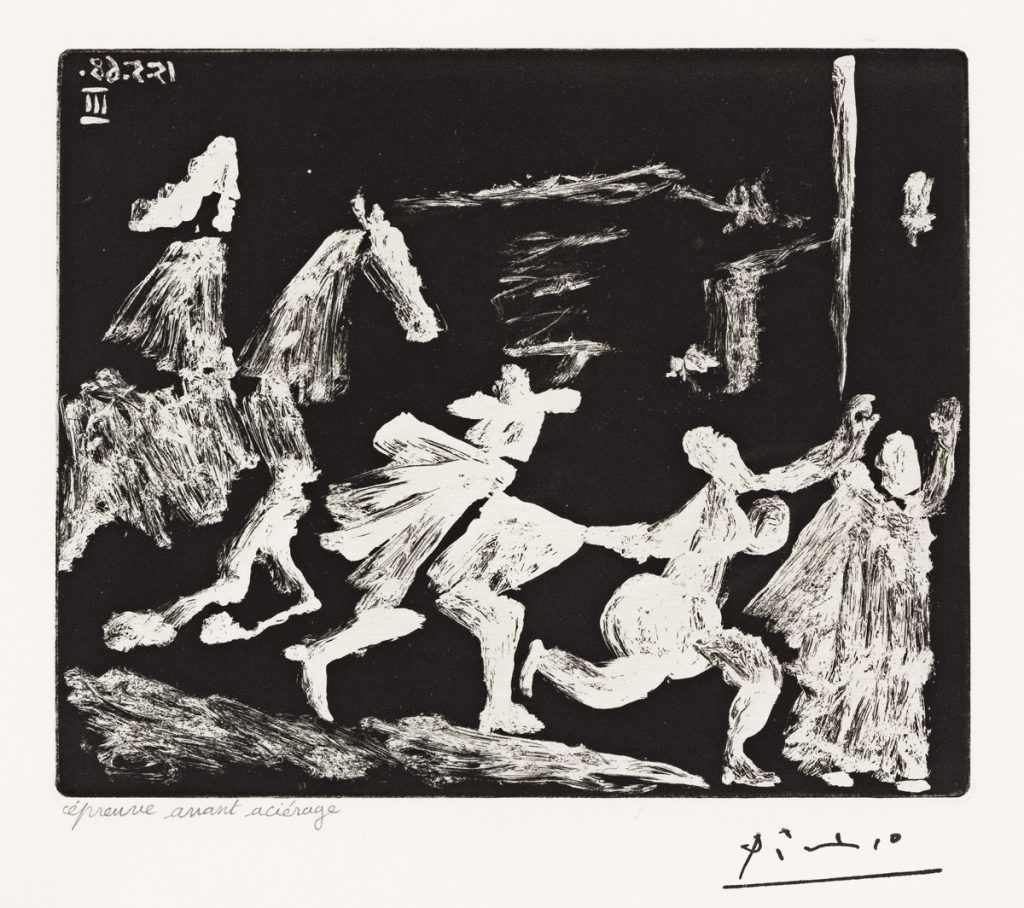
The series is a testimonial summary of Picasso’s career frequently seen through voyeuristic and erotic fantasies. At 87 years old, Picasso explored the humor in aging and inevitable death while he celebrated life and love. Within the series are a multitude of stories, such as La Célestine and Raphael et la Fornarina, with recurring characters, in which Picasso frequently disguised himself. Though completed at the end of a prolific career, 347 Gravures is considered a career masterpiece and is among his most original and inventive works. In his words, the series was his “most sought after—and possibly scandalous—work.”
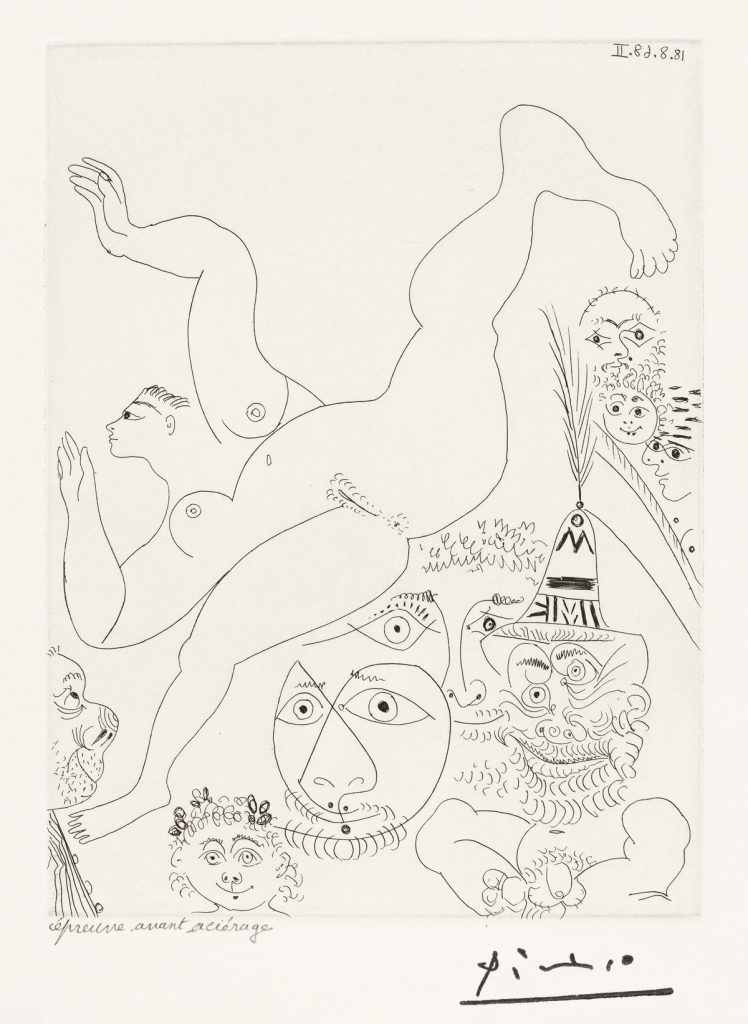
Printed in an edition of 50, collectors in 1968 paid approximately $10 million for the complete set of 347 etchings—a record at the time for any work of art (Picasso had pre-sold all of the editions before he had even completed the series). However, the reception of his works was not always as enthusiastic. In November 1968, the etchings were shown at the Art Institute of Chicago and at Galerie Louise Leiris in Paris. Due to provocative subjects of many of the prints “impossible to show to the general public,” before the debut, art dealer Daniel-Henry Kahnweiler suggested that the Director of the Art Institute of Chicago keep the offending, erotically-charged prints (the majority of the Raphael et la Fornarina series) in a separate portfolio, not to be available to the general public, but only to a few in the Institute’s circle. The prints would also be kept out of the catalogue and only illustrated in separate leaflets. To avoid U.S. Customs, Aldo Crommelynck brought the specially printed leaflets in his baggage on his flight to Chicago. Most art critics disapproved of the Institute’s censorship and fueled a debate on art versus pornography. The French show, also censored, exhibited the same prints. Overall, the public reacted favorably to the series, with over 50,000 attendees in Chicago. The Raphael et la Fornarina series was ultimately shown to the public without censorship at Waddington Galleries, London in 1972.
156 Gravures
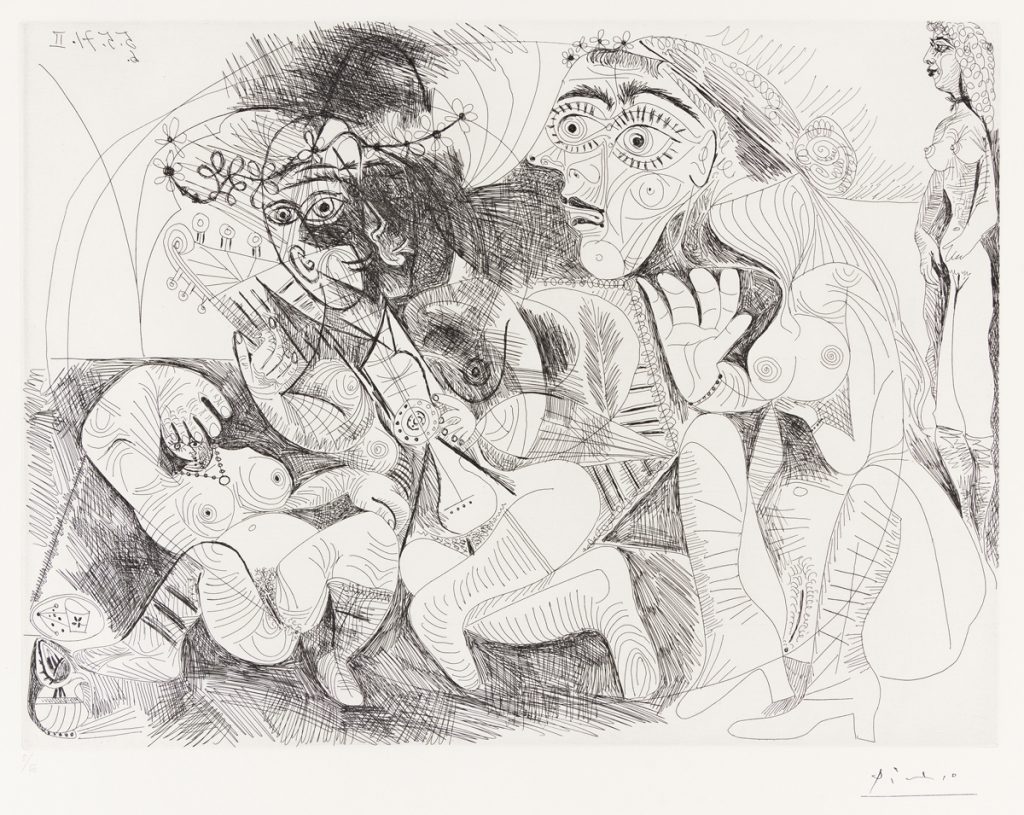
After turning 90, Picasso embarked on another massive project with the Crommelynck printer-collaborators. He began to add 156 prints to his oeuvre, which became known as the 156 Gravures (see lots 304, 305 and 332-336). Completed in 1972, less than a year before his death, this final series was also self-referential and had similar themes as the 347 Gravures. These were not published until after Picasso’s death. Piero Crommelynck worked with Picasso most closely during this series.
The Mougins workshop remained open for a year after Picasso’s death in 1973. Piero and Aldo returned to Paris, where they continued their collaborations with André Masson, Marino Marini (see lots 434-438), and Hans Hartung. Recognized for their renowned talent as intaglio printers, the Crommelyncks attracted the talents of contemporary artists Louise Bourgeois, David Hockney, Jasper Johns, Alex Katz, and Jim Dine. Aldo eventually relocated to New York and partnered with Pace Prints and Piero opened his own studio in Paris in the 1980s and continued printing into the 1990s.
Related Reading: Claude Monet & George William Thornley: A Printmaking Partnership
Chiron Press—The First of Its Kind
Do you have a work printed by the Crommelyncks?
Learn about how to consign to an auction, and send us a note about your item.
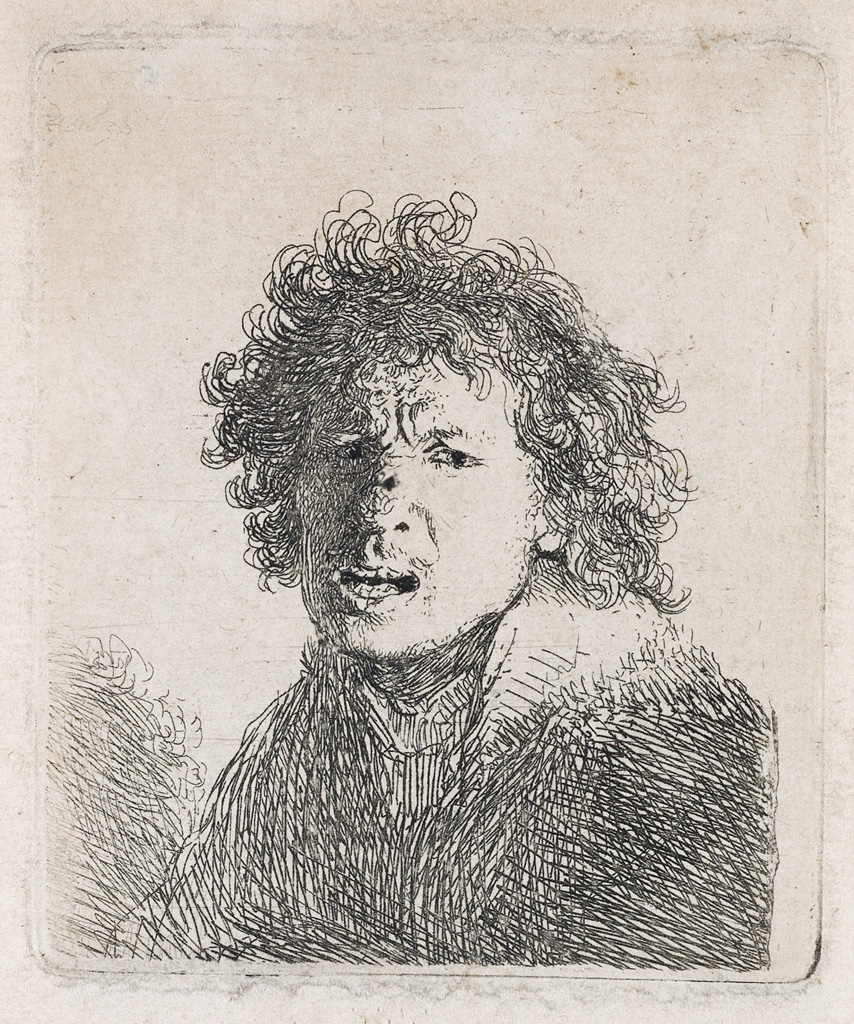
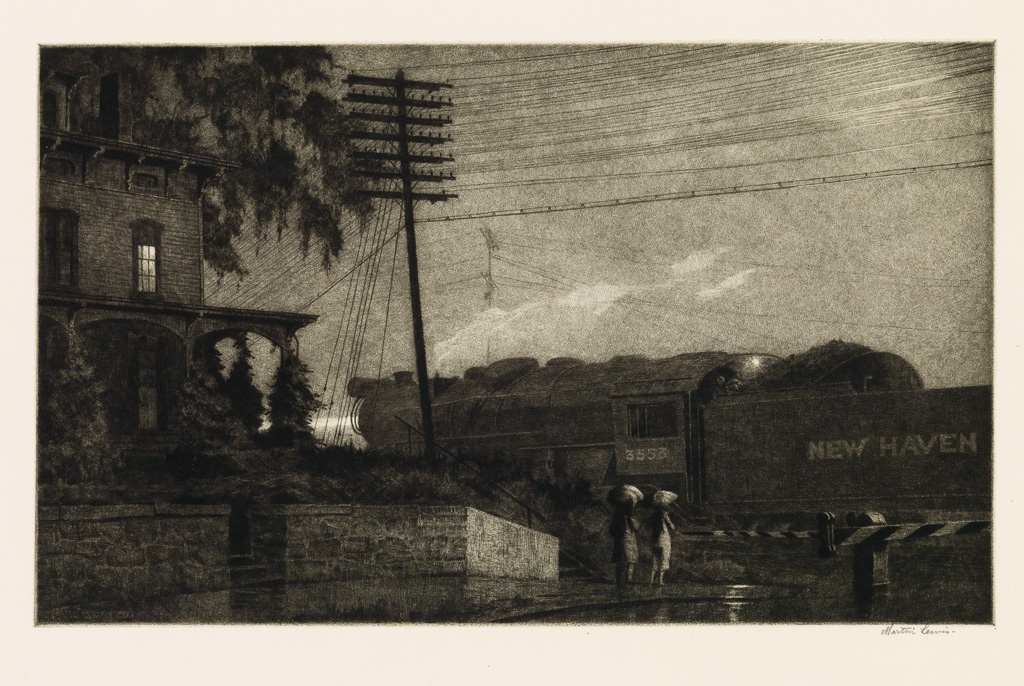
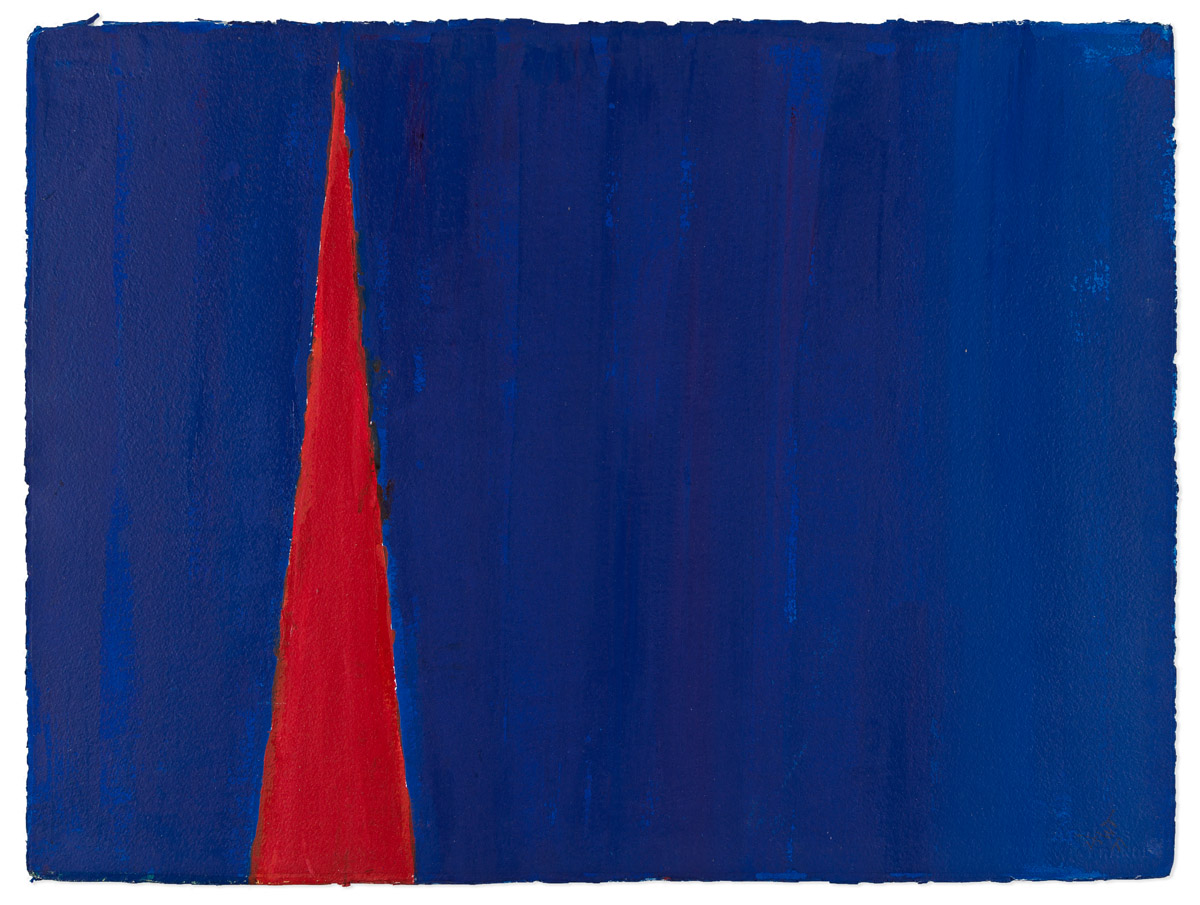










![Grace Meschery-McCormack shares about two copies of Fernando de Rojas’s ‘La Célestine,’ including a limited edition copy illustrated by Pablo Picasso.
At auction April 22. Learn more about the works at the link in our bio.
#Rarebooks #rarebookdealer #antiquarianbooks #auctions
_______________________________________
Music Credit:
Schubert - Piano Quintet in A major ‘The Trout’, D. 667 - IV. Andantino – Allegretto
Music provided by Classical Music Copyright Free on Youtube [https://tinyurl.com/visit-cmcf]
Watch: • Schubert - Piano Quintet in A major ‘...]](https://scontent-iad3-1.cdninstagram.com/v/t51.75761-15/491443494_18499096345036585_5935932878956098058_n.jpg?stp=dst-jpg_e35_tt6&_nc_cat=107&ccb=7-5&_nc_sid=18de74&_nc_ohc=OlBShB8qEWAQ7kNvwHbrXqd&_nc_oc=Adn09Fh3YL-11OkpQcrYGgFN9beLpm0IfGUn2bwN7iJs6d4v8qMeP8kSYmCw82y2ewU&_nc_zt=23&_nc_ht=scontent-iad3-1.cdninstagram.com&edm=AM6HXa8EAAAA&_nc_gid=I48jsxJwo9ZoAWYn9au3wg&oh=00_AfHBUMgxSwlbGJ-J9grZV8YWn6QTPcWAhOxtdTR-YDtzCA&oe=68199551)




